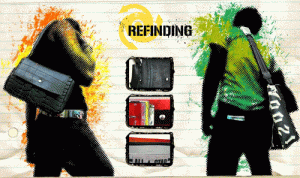It’s been a busy couple of days here and due to get even busier with some visitors in town from Cincinnati and a weekend getaway to Dallas with Cindy after that. In case i don’t get a chance to post with all of that, here is some great posts to keep you busy:
- Coca-Cola’s Conversations Blog – In Mack Collier’s Company Blog Checkup this week, he rated Coke’s effort the best one yet in his ongoing blog series. Their effort is an interesting twist, as the blog author is Phil Mooney, who describes himself as “the historian/archivist for The Coca-Cola Company for the last 30 years.” Given the popularity of Coke memorabilia, this is a great way to tap into an existing community and provide an authentic voice within.
- Guy Kawasaki: “The Art of Visual Thinking” –
 Guy does it again with a stellar post on how the best ideas should be simple… so simple that they can be drawn on a napkin. For instance, the image at right describes the basic idea of Southwest Airlines. No fancy buzzwords, no financial charts and no SWAT analysis. Just a simple idea, brilliantly brought to life with pen and paper. Can the idea behind your brand be this simple?
Guy does it again with a stellar post on how the best ideas should be simple… so simple that they can be drawn on a napkin. For instance, the image at right describes the basic idea of Southwest Airlines. No fancy buzzwords, no financial charts and no SWAT analysis. Just a simple idea, brilliantly brought to life with pen and paper. Can the idea behind your brand be this simple? - Shiv Singh: Avenue A / Razorfish introduces AdLife – I am really intrigued by this new offering (done in partnership with Pluck), which Shiv says “will inject social media features like customer comments and user-generated content into digital advertisements such as banner ads or microsites.”
- Ryan Jones: Interview with CEO of Dynamic Logic – Fellow P&G Marketer Ryan Jones provides a great interview with Nick Nyhan, the CEO of Dynamic Logic, on everything to brand ideals to social media measurement.
- TechCrunch: ToAnswer is Twitter Meets Yahoo Answers – One of the best ways to use Twitter is to ask your network random questions / recommendations. Fred Wilson of a VC is particularly fond of asking these Twuestions as he calls them. Now a new site lets you see all the questions being asked across the Twittersphere. Pretty cool stuff.



 Posted by Dave Knox
Posted by Dave Knox 




 Hard Knox Life is the blog of Dave Knox, a classic CPG Brand Manager. It is about marketing, media & technology and how those forces are changing the job of a Brand Manager.
Hard Knox Life is the blog of Dave Knox, a classic CPG Brand Manager. It is about marketing, media & technology and how those forces are changing the job of a Brand Manager.







